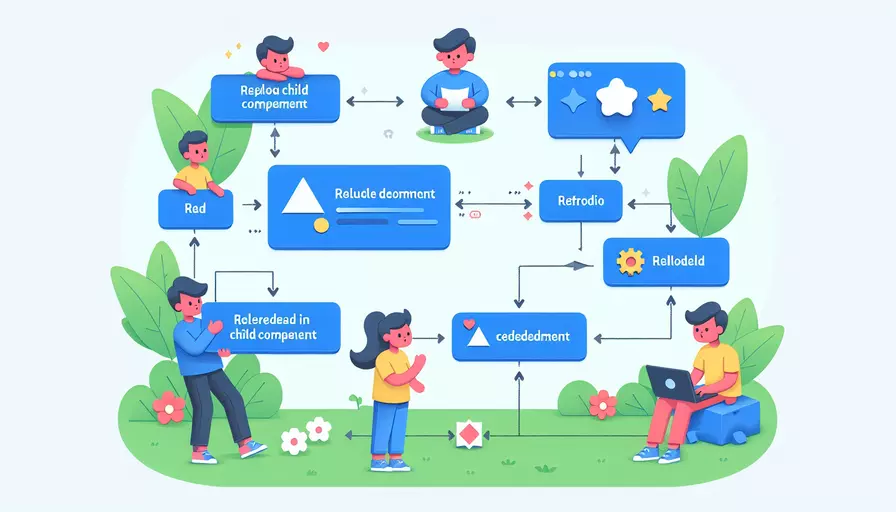
要在Vue中重新加载子组件,可以采取以下几种方法:1、使用key属性强制重新渲染,2、通过v-if控制组件的挂载与卸载,3、使用事件总线或状态管理工具强制更新子组件。这些方法各有优缺点,适用于不同的场景,下面将详细解释每种方法的具体实现和适用场景。
一、使用 `key` 属性强制重新渲染
使用 key 属性是最常见和简单的方法之一。当 key 的值发生变化时,Vue会销毁旧组件并创建新组件,从而实现组件的重新加载。
实现步骤:
- 在子组件上添加
key属性。 - 当需要重新加载子组件时,改变
key的值。
<template>
<div>
<button @click="reloadChild">Reload Child Component</button>
<ChildComponent :key="childKey" />
</div>
</template>
<script>
import ChildComponent from './ChildComponent.vue';
export default {
components: { ChildComponent },
data() {
return {
childKey: 0
};
},
methods: {
reloadChild() {
this.childKey += 1;
}
}
};
</script>
适用场景:
- 需要完全重新渲染子组件,包括其内部状态和生命周期钩子。
- 适用于子组件的数据或状态发生较大变化的情况。
二、通过 `v-if` 控制组件的挂载与卸载
通过 v-if 指令可以控制子组件的挂载与卸载。解除挂载后再重新挂载组件,相当于重新加载组件。
实现步骤:
- 使用
v-if指令控制子组件的显示。 - 通过改变控制变量的值来重新挂载组件。
<template>
<div>
<button @click="reloadChild">Reload Child Component</button>
<ChildComponent v-if="showChild" />
</div>
</template>
<script>
import ChildComponent from './ChildComponent.vue';
export default {
components: { ChildComponent },
data() {
return {
showChild: true
};
},
methods: {
reloadChild() {
this.showChild = false;
this.$nextTick(() => {
this.showChild = true;
});
}
}
};
</script>
适用场景:
- 需要暂时卸载组件并在之后重新挂载。
- 适用于需要清理组件内部状态或执行特定生命周期钩子的场景。
三、使用事件总线或状态管理工具强制更新子组件
通过事件总线或Vuex等状态管理工具,可以在父组件和子组件之间传递消息,从而强制子组件重新加载或更新。
实现步骤:
- 创建一个事件总线或使用Vuex状态管理工具。
- 在子组件中监听特定事件或状态变化。
- 当需要重新加载子组件时,触发该事件或改变状态。
使用事件总线:
// EventBus.js
import Vue from 'vue';
export const EventBus = new Vue();
<template>
<div>
<button @click="reloadChild">Reload Child Component</button>
<ChildComponent />
</div>
</template>
<script>
import ChildComponent from './ChildComponent.vue';
import { EventBus } from './EventBus.js';
export default {
components: { ChildComponent },
methods: {
reloadChild() {
EventBus.$emit('reloadChild');
}
}
};
</script>
<!-- ChildComponent.vue -->
<template>
<div>
<!-- Child content -->
</div>
</template>
<script>
import { EventBus } from './EventBus.js';
export default {
created() {
EventBus.$on('reloadChild', this.reload);
},
methods: {
reload() {
// Logic to reload component
}
},
beforeDestroy() {
EventBus.$off('reloadChild', this.reload);
}
};
</script>
适用场景:
- 适用于组件间通信需求较多的场景。
- 需要在多个组件之间共享状态或事件。
总结
在Vue中重新加载子组件的几种方法各有优缺点。使用 key 属性强制重新渲染适合需要完全重新加载组件的情况;通过 v-if 控制组件的挂载与卸载适用于需要清理组件状态或执行特定生命周期钩子的场景;使用事件总线或状态管理工具则适用于复杂的组件间通信需求。根据具体的应用场景选择合适的方法,可以更高效地实现组件的重新加载。
进一步建议:
- 评估性能影响:频繁的组件重新加载可能会影响性能,建议在使用时进行性能评估。
- 代码复用和维护:选择合适的方式有助于代码的复用和维护,特别是在大型项目中。
- 结合其他技术:在复杂场景下,可以结合Vuex等状态管理工具,提高组件间的通信和状态管理效率。
相关问答FAQs:
Q:在Vue中如何重新加载子组件?
A:Vue中重新加载子组件的方法有多种。下面介绍两种常用的方法。
方法一:使用v-if指令
可以通过在父组件中使用v-if指令来控制子组件的加载和卸载,从而达到重新加载子组件的效果。
<template>
<div>
<button @click="reloadComponent">重新加载子组件</button>
<div v-if="loadComponent">
<ChildComponent />
</div>
</div>
</template>
<script>
import ChildComponent from './ChildComponent.vue';
export default {
components: {
ChildComponent
},
data() {
return {
loadComponent: true
}
},
methods: {
reloadComponent() {
this.loadComponent = false;
this.$nextTick(() => {
this.loadComponent = true;
});
}
}
}
</script>
在上述代码中,通过点击按钮触发reloadComponent方法,将loadComponent设置为false来卸载子组件,然后使用this.$nextTick方法将loadComponent设置为true来重新加载子组件。
方法二:使用key属性
可以通过在子组件上绑定一个动态的key属性来达到重新加载子组件的效果。
<template>
<div>
<button @click="reloadComponent">重新加载子组件</button>
<ChildComponent :key="componentKey" />
</div>
</template>
<script>
import ChildComponent from './ChildComponent.vue';
export default {
components: {
ChildComponent
},
data() {
return {
componentKey: 0
}
},
methods: {
reloadComponent() {
this.componentKey++;
}
}
}
</script>
在上述代码中,通过点击按钮触发reloadComponent方法,将componentKey自增,从而改变子组件的key属性,从而重新加载子组件。
以上是两种常用的重新加载子组件的方法,在实际开发中可以根据具体需求选择适合的方法。
文章标题:vue 如何重新加载子组件,发布者:飞飞,转载请注明出处:https://worktile.com/kb/p/3646821

 微信扫一扫
微信扫一扫  支付宝扫一扫
支付宝扫一扫 